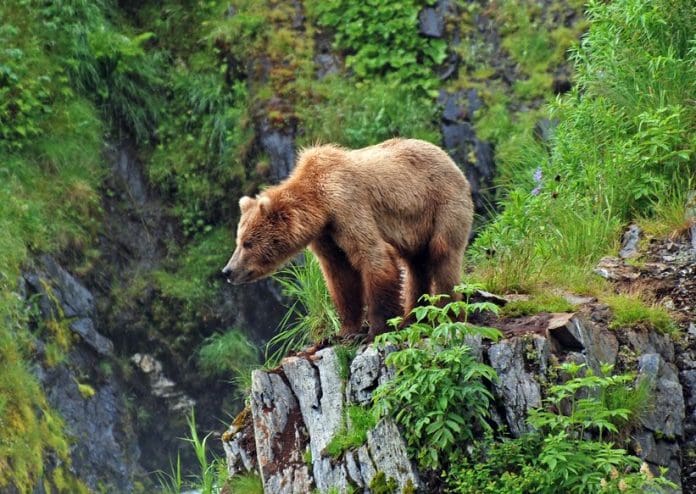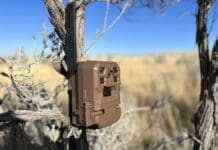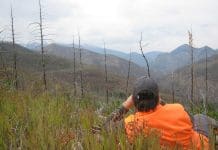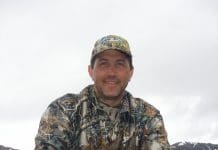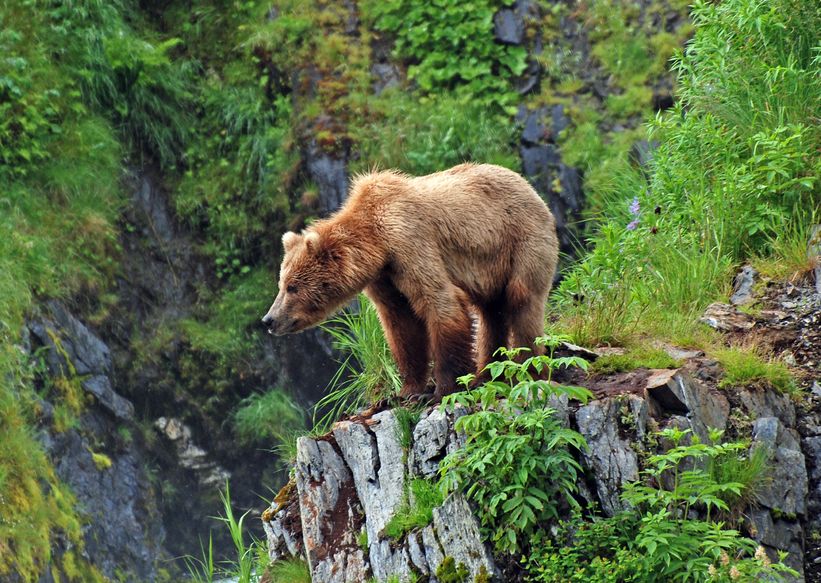
Grizzly Country Common Sense
By Tye Abell, Rokslide Member
For many hunters, the thought of camping, scouting, and hunting in the backcountry where grizzlies roam is more than they are comfortable with. The odds say that you’re more likely to be attacked by a shark (1 in 11,500,000) or struck by lightning (1 in 700,000) compared to a bear attack (1 in 48,500,000); but even with that information, there’s still an innate fear within many hunters that keep them from venturing into grizzly country. My first experience with backpacking, and camping around grizzlies came while I worked in Yellowstone National Park, where the odds of an attack are much higher (1 in 2,100,000). During my summer working in the park, I had two encounters involving grizzlies while day hiking and trail running. In both instances, as soon as the bears saw me, they turned and ran.
During my roughly 20 days of backpacking and camping in the park, I had a couple of black bear encounters, but none involving grizzlies. Since that summer in Yellowstone, I’ve spent roughly 40 days on extended backpacking trips in the Absaroka-Beartooth Wilderness of Montana and Wyoming, as well as the Tetons and the Wind River Range of Wyoming exclusively; and while I’ve walked in the footprints of grizzlies, I’ve yet to see one in an area that many consider to be infested with them.
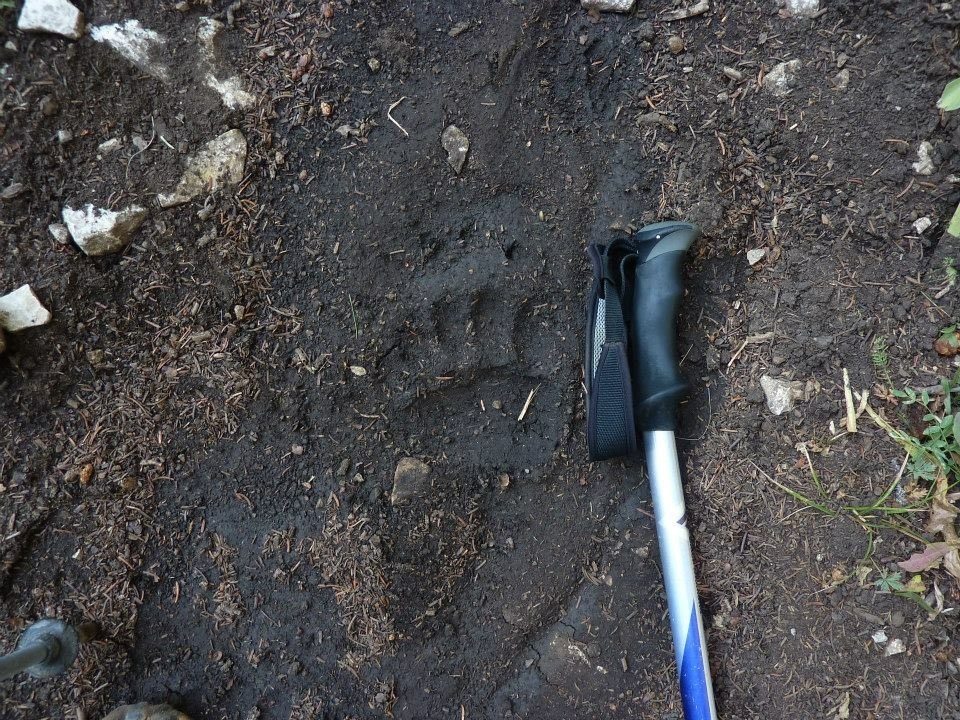
In this article, I’ll share my prersonal tips on how to protect yourself in grizzly country. Although the odds of an aggressive encounter are low, it should be every hunter’s goal to control everything he can to limit the chance of a grizzly encounter.
Why/When Attacks Happen
Most often, bear attacks are a result of a protective sow with cubs. Either the person attacked found themselves in between the sow and cubs; or came up to closely on the sow and cubs by accident, causing the sow to react to protect her cubs. Attacks not involving a sow with cubs are generally the result of the victim surprising the bear. This is often the case when hunters are involved, as we are actively trying to be as stealthy as we can. Very rarely are attacks a result of a bear actively hunting a human being, but that happened. The other possible attack scenarios for a hunter involve a successful hunt in which the bear tries to claim the animal for itself, or a grizzly coming in to investigate a hunter’s bugle, thinking there is an elk to kill nearby. If you were successful, the bear may even be on the animal before you get to it or may have been tracking the animal before you killed it, and can attack then.
What To Do If Attacked
If you have bear spray, (make sure you know exactly how to operate it), use it on the charging bear, as the statistics show it can be very effective at stopping a charging grizzly. If you made the critical mistake of not bringing protection, the first course of action is to stand your ground. Do not turn and run as bears can top 35 mph and will catch you. Most charges are bluffs, and the bear will stop just short of you. If they don’t, allow them to knock you down, and then play dead shielding your neck and head to the best of your ability. The bear is likely to lose interest once it no longer perceives you as a threat. If the bear does not stop, you can shove your arm down the bears throat as a hunter in Montana successfully did in the fall of triggering the bears gag reflex, which may work.
Setting Up Camp
If you have the luxury of packing in on horseback and setting up an extensive camp, then you’ll likely have the ability to bring in an electrical fence to secure your camp. For the backpack-style hunter, an electric fence is a luxury few will want to add to their pack. With that said, setting up your camp with a completely separate cooking area a minimum of 100 yards from where you’ll sleep, is a critical step for safety. A bear will follow its nose—which is stronger than a bloodhounds—to whatever it senses and decides to investigate.
Hanging your food, or any other item that has a scent, out of a bear’s reach is also imperative for camp. That includes items like your Chapstick, toothpaste, wet wipes, and anything else with a detectable odor. It’s also advised to avoid camping near game trails or any other obvious game travel corridor such as a saddle. If the area you’ll be hunting is above treeline, and hanging seems unlikely, a bear canister is an option that will add weight rob space in your pack, but is still necessary. I used a bear canister (bear vault BV500) while hiking Wyoming’s Teton Crest Trail as required by the park regulations. While it was a pain to pack, it held two peoples’ food for a four-day trip easily, and doubled as a stool when in camp. The same cooking area precautions are still necessary with a bear-canister, but the chore of hanging is removed. In other treeless scenarios, I’ve hung my food off of cliffs or large boulders—anything to increase my safety.
How to Hang Your Food
The easiest way to hang your food out of a bear’s reach (at least 10′ high, and 4′ from the trunk of the tree) is a block & tackle made from two 50′ lengths of strong, non-stretch cord, and three carabiners. A video demonstration of this method is available from Twisted Stave Media and Backcountry Hunters and Anglers here
My kit for hanging my food is made up of two 50′ lengths of reflective cord similar to Kelty Triptease, and 3 C.A.M.P Nano Carabiners. This combo weighs 154 grams, (5.4 ozs.) and is well worth its weight for the ease in which it allows you to hang heavy food bags or game bags full of meat if your hunt is a success. I used this method during my mule deer hunt in the Wyoming Range this last fall and will continue to use it anytime I’m in bear country below treeline.
Cooking
The main goal of your cooking method while in grizzly country should be to minimize contamination, and the need to clean any pots or mugs. The freezer bag method of cooking in which you simply boil water, and pour it into a Ziploc bag containing your meal to allow it to rehydrate is the best method I’ve found. After I’ve eaten, the only trash I have is the Ziploc, and the only utensil I need to clean is my spork, which will be hung in my food bag as well. Another precaution that is highly recommended is cooking and eating in a separate set of clothes, and to store those clothes in the cooking area away from camp as well.
The goal is to minimize any smells that would entice a bear to come in and inspect your tent. So long as the only smell within your tent is human body odor, you should be safe. There are stories of bears investigating tents in which the occupant had a tube of chapstick in his pocket, so again, hang everything with an odor. As for what to hang your food in, I’ve always used a dry sack, similar to the Sea to Summit Ultra-Sil Dry sack. At under two ounces it’s a convenient way to keep your food organized, and the roll-top closure makes a great loop for attaching the bag to a carabiner for hanging.
Protection
Guns or Bear Spray? That’s always been the debate. Both options can be effective, but the vast majority of the research conducted on the subject in the last 30 years (bear spray became available around 1985) shows that bear spray is more effective. The easiest way to illustrate the difference between the two options is to think of the gun as a laser, and the bear spray as a skeet choked shotgun blast firing the smallest BB’s you can imagine. The coverage of the bear spray is far superior to that of the sidearm, and very few human beings are capable of accurately aiming a handgun in the heat of the moment with a snarling grizzly quickly closing the distance.
For more information on the efficacy of bear spray, look here: https://www.fws.gov/mountain-prairie/species/mammals/grizzly/bear%20spray.pdf There are several other articles detailing the efficacy of bear spray that a simple Google search will bring up for further research. Where spray can fall short is when a bear may already be on the animal killed. In this case, firing a “warning” shot to scare the bear away could be effective. If you’re bowhunting, you’d need to have a sidearm but be sure and check state regulations to verify that sidearms are legal during bow season.
Downed-Game Care
The worst case scenario while hunting in grizzly country is shooting an animal late in the evening. The idea of breaking a big game animal down in the cover of darkness with bears in the area can be a frightening thought. For this reason as well as others, it’s not recommended to hunt solo in grizzly country. With a hunting partner, you can have one person take guard while the other works on breaking the animal down. Time is of the essence anytime you process a game animal, but especially so in grizzly country. For this reason, the gutless method (search “gutless method” on Rokslide’s forums here) is recommended to allow you to get the quarters away from the carcass as quickly as possible. It is also imperative that you hang your meat in a location that allows you to see it from a 50 to 100-yard distance to avoid surprising a bear that may have found your stash of meat while you were away.
Another option is to start a small fire (if legal and the conditions allow) to help illuminate the area, and potentially keep a bear from coming in. Removing the clothes used during the butchering process, and cleaning up as well as you can before getting into your sleeping bag is also necessary, no matter how tired you may be. As with all other food-like items and odors, leave them in the cooking area away from your actual camp.
In Conclusion
If you follow the advice from this article, your chances of a negative grizzly encounter should fall below the already miniscule odds of an attack happening. That said, nothing is foolproof and sometimes stuff happens. All you can do is take every precaution availabe and use these common-sense methods to increase your odds of returning home unscathed. Don’t let the presence of grizzlies in the area you would like to hunt deter you from what could potentially be the hunt of a lifetime.
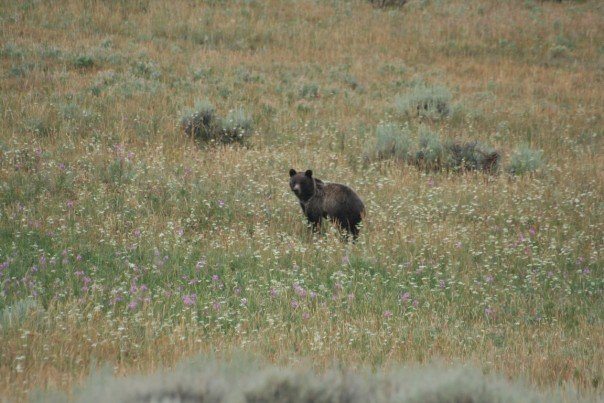
Sidebar: Interview with Clay Hayes of Twisted Stave Media
I contacted Clay to get his take on hunting in grizzly Country. Clay has spent 30-plus years hunting, fishing, and camping in grizzly country. The “interview” that follows was conducted while I was trying to keep my two-year old daughter occupied. Consequently, all of this is from memory and minimal notes. That said, I’ve done my best to recreate the interview, I just want the reader to be aware that these are not Clay’s words verbatim:
TA– “Clay, how do you feel about hunting solo in grizzly country?”
CH– “I think it’s all about an individual’s comfort level with being in bear country. When I hunt around grizzlies, I’m generally with a group in camp, and then we will branch out and hunt on our own during the day. I’m not comfortable hiking in the dark in areas where I can’t see for a good distance, so that can limit me on some of the areas I can get to and can change how I would hunt, but it’s something I feel is necessary when the chance to surprise a bear is there.”
TA– “When successful, what is your preferred way of taking care of the animal and why?”
CH– “I prefer the gutless method for the speed with which you can get the quarters off the animal and away from the carcass. If you gut the animal, you’re essentially releasing a very large scent plume for the bear to follow back to the carcass, where the gutless method keeps everything contained and keeps the scent plume as minimal as possible. When I remove the quarters from the animal, I want to get them a good distance away and in an area where I can see a minimum of 50-100 yards in all directions if possible to keep the chances of surprising a bear to a minimum when I come back to get the meat. As an added note, no matter how late it is or how tired you may be, take the time to remove the clothing you used while butchering the animal and place it away from camp before crawling into your sleeping bag.”
TA– “Bear Spray or sidearm for protection?”
CH– “Bear Spray all the way. When you think about it, a handgun is only so powerful, and then on top of that, you’ll be trying to hit a coke can size target that is running towards you and you’re likely to not be calm with a refrigerator-sized bear headed at you. Bear spray offers a much greater area of coverage to deter the bears attack.”
TA– “Have you ever had an encounter with a grizzly?”
CH-“I’ve never had an encounter with a grizzly. I’ve seen them, but have never had any type of altercation with one.”
TA– “Any other pieces of advice for those that will be hunting in bear country?”
CH-“Be aware that you are not the apex predator in that environment. They are the top of the food chain. If you see ravens circling an area, there’s a high likelihood there’s a carcass there and it’s best to avoid those areas. Don’t camp on game trails or any other area that would concentrate game movement. Don’t let the presence of bears deter you from hunting a particular unit. There is some great hunting in grizzly country.”
You can ask Tye questions or discuss this article here
Read more of Tye’s articles here














